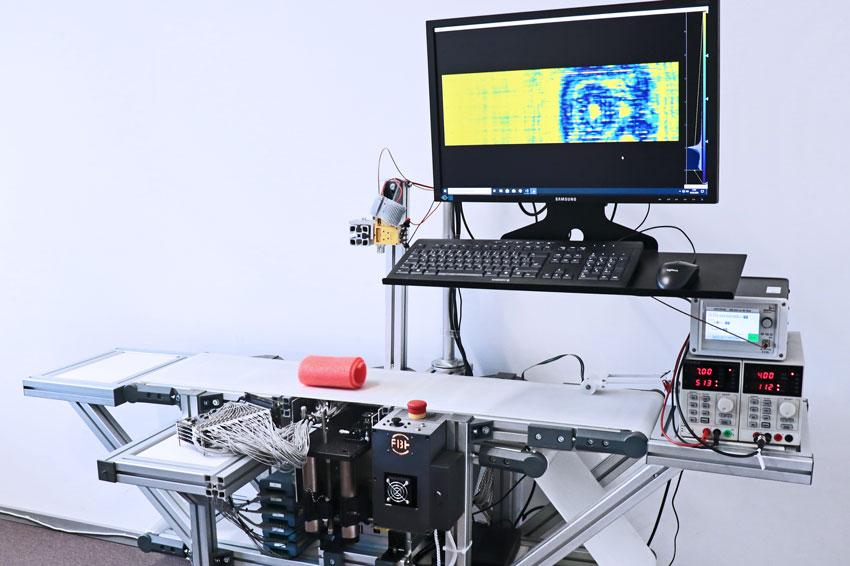Terahertz line scanner for industrial applications
18.06.2024 - The FBH has developed a monolithically integrated THz detector for plastic components, enabling cost-effective realization of larger scan line lengths in industrial environments.
Terahertz radiation (THz) penetrates clothing, organic tissue, and many other materials including plastics, polymers, and ceramics. In industry, it is suited for non-destructive material testing and for identifying hidden objects, for example to detect defects in the material. For such applications, the Ferdinand Braun Institut fuer Hoechstfrequenztechnik (FBH) in Berlin, has developed a terahertz line scanner that is unique in terms of scalability, throughput, and speed. The technology demonstrator consists of a novel detector head that scans plastic parts on a conveyor belt – this scan is transmitted to a monitor along with a video image.
With this FBH technology demonstrator, a terahertz line scanner has been realized for the first time whose detector head is based entirely on monolithically integrated THz detectors. Since the antenna structures are integrated on the chips, chip production can also be scaled efficiently and cost-effectively to larger scan line lengths. The THz detectors can generally be realized in a frequency range from about 100 gigahertz (GHz) to 2 terahertz both broadband or narrowband. The detector spacing is defined on the chip, allowing it to be significantly smaller than conventional implementations. This, in turn, increases the image resolution.
The realized detector head consists of a 6 cm long detector line, which is composed of 20 individual chips with four THz detectors on each chip. This amounts to 80 detectors, arranged at a distance of 640 µm. Depending on the terahertz source selected, these detectors can be used in the frequency range between 100 GHz and up to 1.5 THz. The speed of the 27-centimeter-wide conveyor belt of the technology demonstrator can be variably adjusted – up to 1.5 meters per second.
Each THz detector signal is amplified and digitized with a resolution of 16 bits. The readout speed of the line can be up to 15,000 images per second. Measurements of the THz detectors provide a bandwidth of at least 2 GHz. Example measurements at 110 GHz with a sampling rate of 5,000 images per second demonstrate a recording speed of less than one second at a conveyor speed of 0.25 meters per second. This makes the THz line scanner an efficient and cost-effective solution for industrial applications.
Contact
Ferdinand-Braun-Institut, Leibniz-Institut für Höchstfrequenztechnik
Gustav-Kirchhoff-Str. 4
12489 Berlin
Germany
+49 30 63922-600





